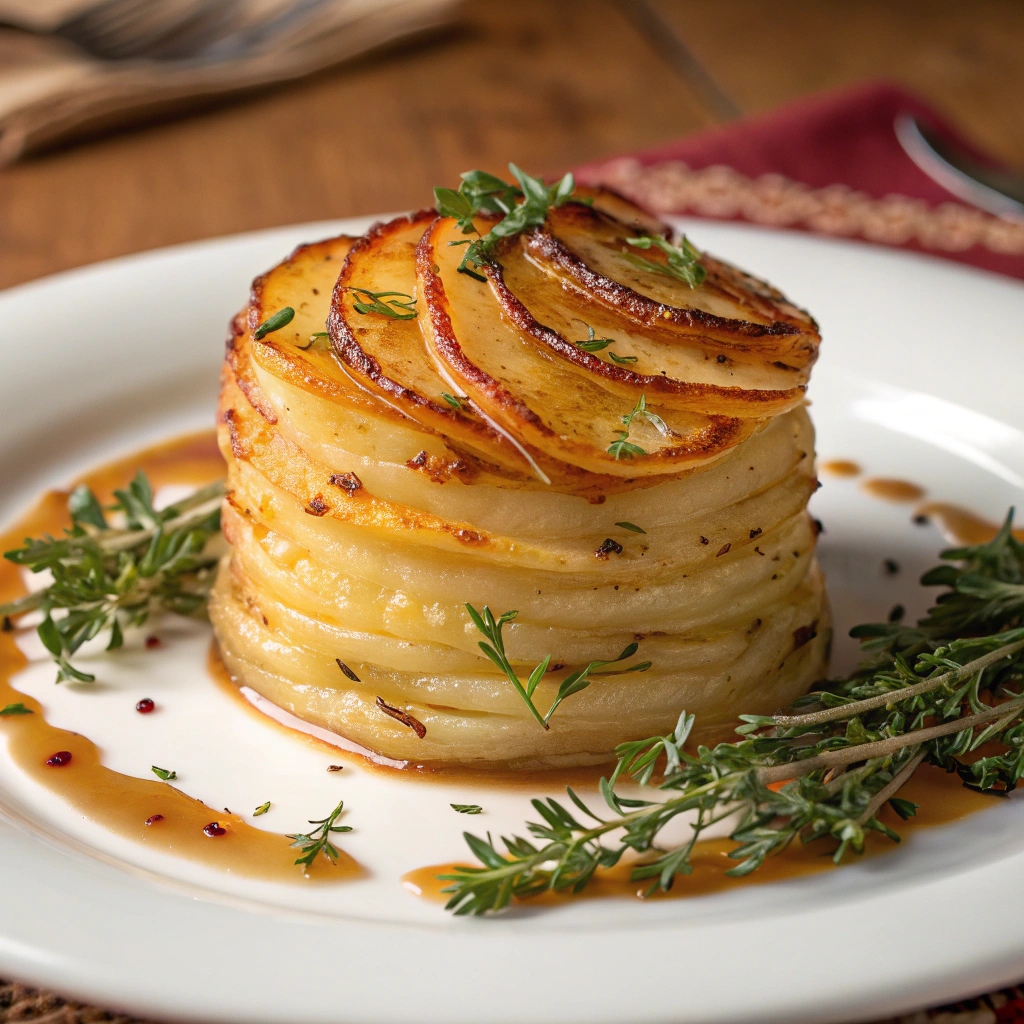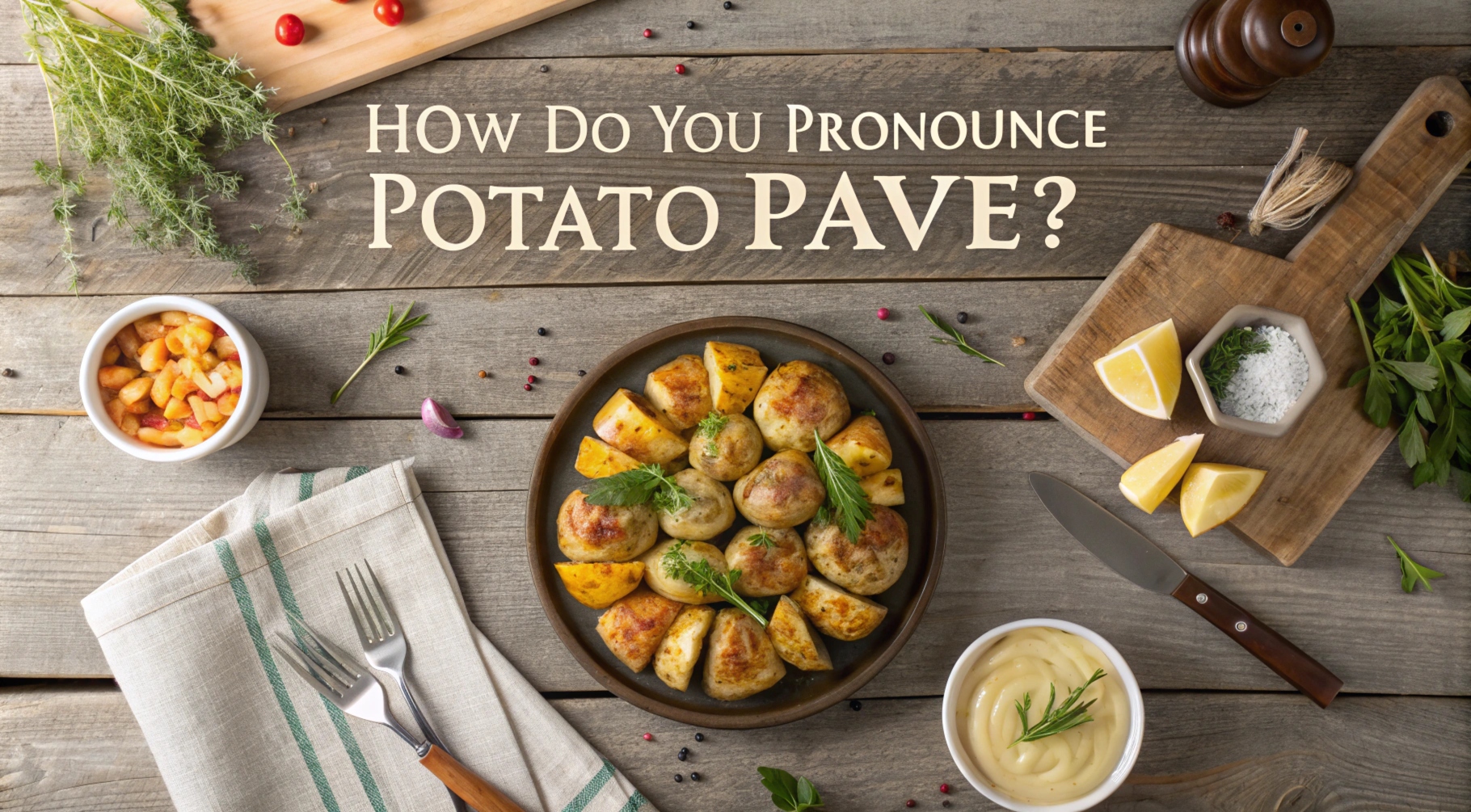How do you pronounce potato pavé? The term potato pavé might sound sophisticated, but it represents a dish that beautifully combines elegance with comforting flavors. t’s not uncommon for people to ask, “What’s the correct way to pronounce potato pavé?” If you’ve been curious too, you’re in good company. This dish, which comes from the French culinary tradition, carries a name as refined as the dish itself, but with a little guidance, you can pronounce it like a pro.
To begin, potato pavé is pronounced as puh-TOH-toh pah-VAY. The word pavé comes from the French word for “paving stone,” which reflects the dish’s neat, rectangular or square shape. The soft “é” in pavé is pronounced like “ay,” similar to the ending of the word “café.” When spoken correctly, the term flows smoothly and effortlessly, adding a touch of authenticity to your culinary vocabulary.
Understanding the pronunciation of potato pavé goes beyond language. It demonstrates respect for the culture and techniques behind this sophisticated dish. Knowing how to say it properly can also enhance your dining experience, whether you’re ordering it at a fine restaurant or discussing it with fellow food enthusiasts.
For those looking to incorporate potato pavé into their own cooking, using the correct pronunciation adds authenticity to your presentation. Imagine preparing this elegant dish for guests and confidently describing it by name—it elevates the experience for everyone at the table. Furthermore, mastering its pronunciation reflects your appreciation for the artistry involved in French gastronomy.
For more inspiration, check out our guide to quick Dinner recipes
How Do You Pronounce Potato Pavé?
To start, let’s break down the pronunciation. The term potato pavé is pronounced as puh-TOH-toh pah-VAY. The word pavé comes from French and means “paving stone,” a nod to the dish’s neat, rectangular or square shape. The final “é” in pavé has a soft sound, pronounced like “ay,” similar to how you would say “café.”
To pronounce it correctly, say “puh-TOH-toh” for potato and then “pah-VAY” for pavé, keeping the second word smooth and flowing. Focus on the “VAY” sound, as it carries the elegance of the French origin. Avoid making the “VAY” sound too sharp or harsh—keep it gentle and natural.
When practicing, try saying the term slowly at first and then speed up as you gain confidence. Listen to recordings or watch videos of chefs and culinary experts saying the word to help you perfect it. With a little practice, you can confidently pronounce potato pavé and impress others at the dinner table or in conversation.
Why Does Pronunciation Matter?
Understanding how to pronounce potato pavé correctly is more than just a matter of language—it shows respect for the culture and culinary techniques behind the dish. By using the proper pronunciation, you demonstrate an appreciation for the artistry that goes into creating this elegant dish.
When dining at a fine restaurant, confidently pronouncing potato pavé enhances your experience and shows respect for the chef’s skill and effort. It can also make conversations with servers or dining companions more enjoyable and engaging. Similarly, when preparing or serving the dish at home, using the correct term adds a layer of authenticity and sophistication to your presentation.
Correct pronunciation isn’t just about saying the words properly—it reflects an understanding and respect for the origins of the dish. Whether in casual conversation, at the dinner table, or while trying the recipe yourself, knowing how to pronounce potato pavé correctly deepens your connection to this classic culinary creation.
Origins of the Term Pavé
To better understand how to pronounce potato pavé, let’s explore its origins. The word pavé originates from the French term for “paving stone,” reflecting the dish’s compact, structured shape. In classical French cuisine, chefs used the term to describe foods molded into neat, rectangular forms, much like cobblestones.
The connection between the shape and name highlights the precision and elegance of French gastronomy. By pronouncing it accurately, you honor the tradition and artistry that the dish embodies.
How to Use Potato Pavé in Conversations
When discussing potato pavé, it’s essential to use the term naturally and confidently. Here are a few examples of how to incorporate it into conversations:
- When Ordering at a Restaurant:
“I’d like to try the potato pavé with the filet mignon, please.” - When Hosting a Dinner Party:
“This evening, I made a classic potato pavé to pair perfectly with the roast chicken.” - When Sharing Recipes:
“The secret to a perfect potato pavé is pressing it overnight for the best texture.”
Using the term correctly not only demonstrates culinary knowledge but also helps others learn and appreciate the dish.

Tips for Mastering Pronunciation
If you’re still unsure how to pronounce potato pavé with confidence, these tips can help:
- Break It Down: Start with “puh-TOH-toh” for potato and “pah-VAY” for pavé. Break it down and practice each word individually before saying it all together.
- Listen to Audio Clips: Search for audio pronunciations online to hear native or professional speakers.
- Practice with Friends: Practice saying the term with friends or fellow food enthusiasts who can offer feedback.
- Use It in Context: Incorporate the term into your conversations about food to become more comfortable with it.
- Watch Cooking Shows: Listen for chefs using the term in cooking programs to pick up pronunciation and context.
FAQs About Potato Pavé
1. What does pavé mean in English?
The word pavé comes from the French term meaning “paving stone.” In cooking, it refers to a dish prepared in layers and molded into a rectangular or square shape, resembling the uniform and structured arrangement of paving stones. The name reflects the dish’s appearance, where the individual layers fit together neatly, forming a compact and structured shape.
2. Why is it called potato pavé?
The dish is called potato pavé due to its layered structure that mirrors the arrangement of paving stones. The main ingredient in this version is potatoes, which are thinly sliced, stacked in a compact form, and baked until crispy. The name combines the French term for “paving stone” with the primary ingredient to describe a dish that is both visually structured and flavorful.
3. Is the pronunciation different in different regions?
While accents may influence the pronunciation slightly, the correct French pronunciation of pavé is “pah-VAY.” In some regions, English speakers might pronounce it differently, but “pah-VAY” is the widely accepted pronunciation around the world. This consistent pronunciation helps maintain the authenticity of the term when referring to dishes prepared in the pavé style.
4. Can I use the term pavé for other dishes?
Yes! The term pavé is not limited to potatoes. It applies to any dish prepared in a compact, layered, rectangular, or square form. For example, you can find chocolate pavé, vegetable pavé, or even meat pavé, where the ingredients are arranged similarly to resemble the structure of paving stones. This technique can be applied to a variety of foods, making pavé a versatile term in the culinary world.
Conclusion
So, how do you pronounce potato pavé? It’s pronounced as puh-TOH-toh pah-VAY, with an emphasis on the soft “ay” sound in pavé. Mastering the pronunciation is more than a linguistic skill—it’s a way to connect with the cultural and culinary roots of this elegant dish. Understanding its origins and significance enhances your appreciation for the artistry behind its creation.
Whether you’re ordering it at a fine dining restaurant, preparing it for a dinner party, or simply discussing recipes with friends, saying potato pavé correctly allows you to speak with confidence and authenticity. It demonstrates respect for the dish’s French origins while showcasing your own culinary knowledge.
Why not practice saying it aloud? Share your knowledge with friends and wow them with your expertise! The next time you enjoy this classic French dish, you’ll not only savor its rich flavors but also celebrate its cultural heritage. By mastering its pronunciation, you add a touch of sophistication to your dining experience

